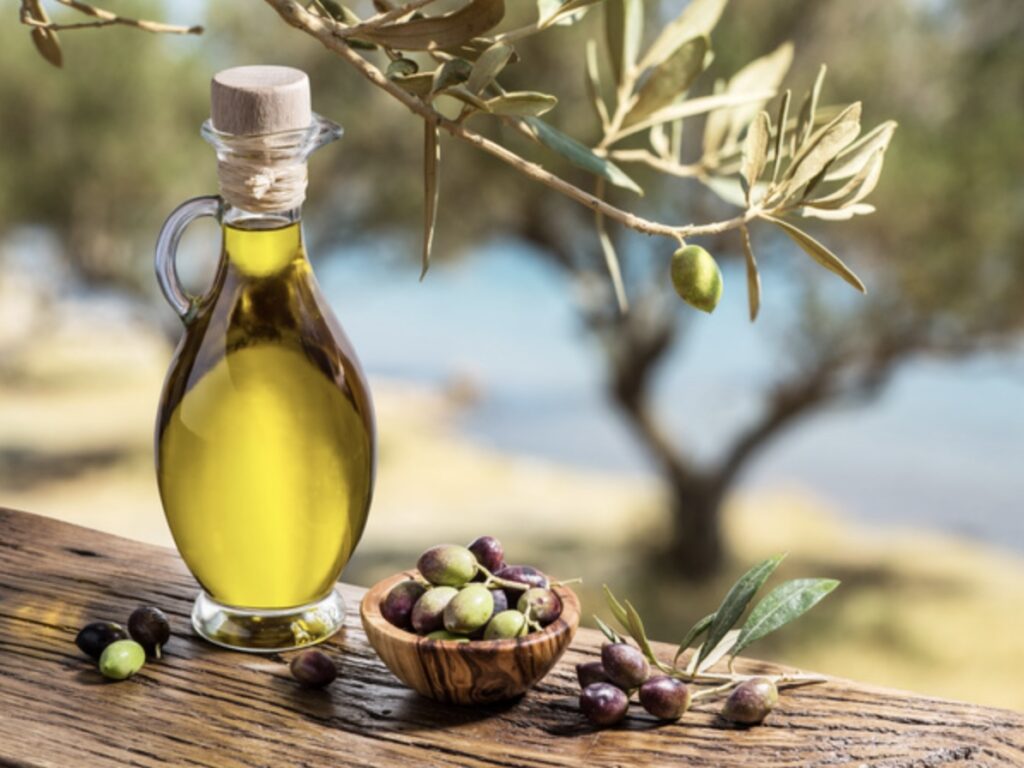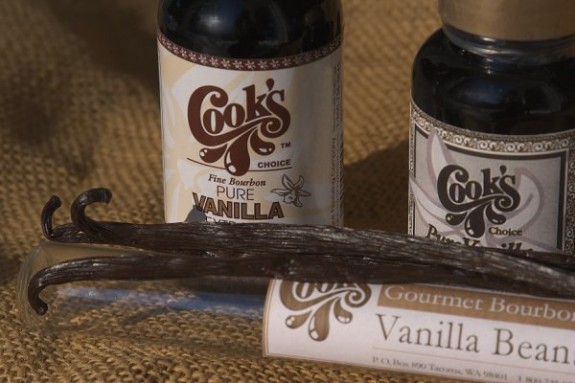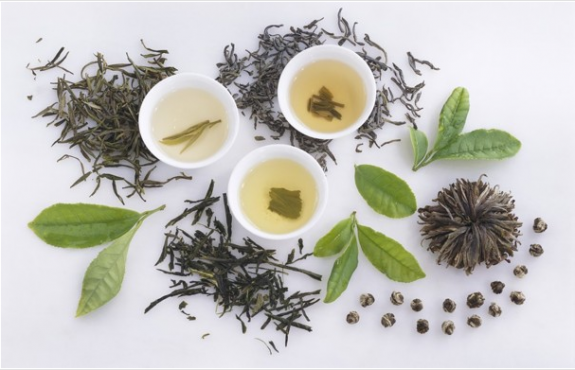Obesity Rates Declining? Nothing Short of Miraculous!
- At August 10, 2013
- By Katherine
- In Articles, News
 0
0
I was asked by the newly launched Washington Post TV’s “On Background” to discuss last week’s news reports of the first decline in childhood obesity in decades. Childhood obesity decreased in 19 states, according to the latest Centers for Disease Control data. This modest decline is nothing short of miraculous because overall, America’s food and physical activity environment seems worse than ever. Calorie-dense snack foods and fast foods are everywhere – easily and cheaply available. Children and adults spend even more time sitting in front of computers, televisions, in classrooms and cars than just a few years ago. This reversal means families, parents, caretakers, teachers, and schools are making huge efforts to overcome these negative influences.
Reversing obesity in our culture, where overweight is the norm (2 out of 3 adults and 1 out of 3 children are overweight or obese), takes effort ; it’s not an accident! Adults are making better – harder – choices for children. Americans may be slowly internalizing the need for healthy eating and exercise. Just as smoking was once considered normal adult behavior, we’re gradually realizing that mindful meals and physical activity must be made a societal norm. And that’s great news… for children, for their families, and for our country, which spends billions of dollars annually on obesity and its related diseases, including type 2 diabetes, heart disease, cancer, and more.
“Obese children are more likely to become obese adults and suffer lifelong physical and mental health problems,” according to the CDC. “Obesity rates in low-income preschoolers, after decades of rising, began to level off from 2003 through 2008 and now are showing small declines. However, too many preschoolers are [still] obese,” continued the report.
Are you dangerously overweight? Find out by checking out my 8 Steps!
Some reasons given for the successful reversal of obesity:
It seems small, simple changes have been responsible for this amazing improvement in the health of children. The power of small changes is described in my Diet Simple chapter: “Easy Solutions for Your Kids,” with tons of ideas easily integrated into your family life. Just adding fruits and/or vegetables at each meal or 15 extra minutes of daily physical activity can make a huge difference in a child’s health and weight. For fun, easy recipes and tips, buy Diet Simple: 195 Mental Tricks, Substitutions, Habits & Inspirations, and for more recipes, buy Diet Simple Farm to Table Recipes.
Katherine Featured on CBS Evening News, 2010
Are you dangerously overweight? Find out by checking out my 8 Steps!
Katherine’s Weekly Market Recipe: Light Sweet Potato Flan with Vanilla Bean
- At November 06, 2012
- By Katherine
- In News, Recipes
 0
0
My very luscious version of a “flan,” a custard dessert, is lighter and simpler than most, and highlights one of the most nutritious seasonal foods – the sweet potato, and a favorite flavor: Vanilla. The vanilla’s quality is essential to the flavor, so I buy special plump, juicy California vanilla beans – the kind top chefs use – from Cook’s.** Sprinkle the flan with toasted pecans for a bit of crunch. Make in six or eight “personal” soufflé dishes, or in one large dish. Perfect as a holiday dessert!
Today is the 12th “Katherine’s Market Recipe,” all of which are designed to be delicious, easy, quick, family-friendly, nutritious (heart-healthy & diabetes-friendly), and to highlight produce found at our local Farmers Markets this week. At your Farmers Market, you’ll find produce picked at peak ripeness, which means maximum flavor, texture and nutrition. You’re also helping save the environment when you buy at your Farmers Market. Here’s how…
For my “Light Sweet Potato Flan with Vanilla Bean,” I recommend you buy your sweet potato at the Glover Park – Burleith Farmers Market on Saturday, or Dupont Circle’s Fresh Farm Market (open year-round) on Sunday.
**Cook’s Vanilla
And don’t forget the Cook’s Vanilla for your Flan and other holiday baking. I first discovered this special vanilla in Georgetown’s Griffin Market (now closed). It peaked my interest because former Washington Post food reporter (and longtime Georgetown resident), Walter Nicholls, endorsed it and provided it to Griffin. Apparently, Walter has teamed up with Paso Robles, California’s Cook Flavoring Company, a family-owned business. “They personally monitor the cultivation and harvest of its vanilla beans in a way that few can match and no one can exceed, extracting the flavor by the same slow, cold extraction method the family has been using for almost a century,” said Walter. The best pastry chefs in town seem to use it: Baked & Wired, Dolcezza, Black Salt, CoCo Sala, CityZen, the Hay Adams hotel and all of Jose Andres restaurants, to name a few. Beans and extract are available locally at Rodman’s on Wisconsin Avenue.
Katherine’s Light Sweet Potato Flan with Vanilla Bean
Serves 6 – 8
2 Cups 1% Lowfat Milk
2/3 cup Granulated Sugar
½ Vanilla Bean, halved lengthwise
¾ pound Sweet Potato (1 large)
2 Eggs
1 Egg Yolk
1Tablespoon Warm Molasses (Optional)
1 ounce (1/4 cup) Chopped, Toasted Pecans or any favorite Nut (Optional)
Preheat oven to 350 degrees F. Place sweet potato on the oven rack and let cook for about 45 to 60 minutes or until tender when pierced with a fork. Use long tongs to pull out of the oven. When warm to the touch, remove the peel. Mash the potato flesh and measure out ¾ cup.
Turn oven temperature down to 325 degrees F. Lightly butter or spray the insides of 6 or 8 ½-cup ramekins* or a 6-cup glass Pyrex bowl or soufflé dish.
In a medium saucepan, bring milk, sugar, and vanilla bean slowly to a boil, stirring until sugar is dissolved. Turn off the heat. Pull out the vanilla bean and scrape the vanilla seeds into the milk mixture. Return the pod to the pot and let sit for 15 minutes to let flavors blend.
Meanwhile, puree the 2 eggs and 1 egg yolk with the mashed sweet potato (I use a Cuisinart Smart Stick immersion hand blender). Add the sweet potato mixture to the warm milk mixture and puree until well blended – most easily done (and less messy) with an immersion hand blender. For a smooth custard, try not to create too many bubbles.
Pour the liquid into six or eight ramekins, or into the 6-cup soufflé dish. Set the soufflé dish(es) into a large baking pan and add boiling water until it is halfway up the sides of the soufflé dish(es). Place in the center of the oven and bake until slightly wobbly in the middle – about 40 to 45 minutes for the individual ramekins or 1 hour if you’re using the larger soufflé dish.
To serve: Leave the custards in the water bath until they are not too hot to handle or until ready to serve. Slide a knife around the inside edge of the individual dishes and turn them onto serving plates. Or scoop out 6 or 8 servings from the large soufflé dish. Over each serving, drizzle the warm molasses and sprinkle chopped, toasted pecans.
**A “ramekin” is an oven-proof ceramic or glass serving dish, usually round, but sometimes in novelty shapes, ie, hearts or ovals.
The entire recipe = 1,000 calories (1,242 calories with molasses and pecans). Divided into 6 servings = 167 calories per serving (207 with molasses and pecans). Eight servings = 125 calories per serving (155 with molasses and pecans).
Katherine’s “Light Sweet Potato Flan with Vanilla Bean” was adapted from award-winning cookbook author, Deborah Madison’s “Local Flavors: Cooking and Eating From America’s Farmers’ Markets.”
Sweet Potatoes, considered one of the “Super Foods,” are loaded with Beta-Carotene, the orange pigment which is a potent anti-oxidant. It is important for your immune system, your skin, your vision, bones, reproduction, and may reduce cancer risk. But sweet potatoes provide so much more; they’re also high in fiber, vitamins C, E, the B vitamins, and minerals such as potassium, manganese, magnesium and iron. Sweet potatoes’ origins date back thousands of years in Peru, became a favorite of Christopher Columbus once he landed in America, and grow particularly well in the American South, where they have become a staple.
Experts Read the Tea Leaves: 7 Tips for Tea Drinkers
- At October 31, 2012
- By Katherine
- In Articles, News
 3
3
“Experts Read the Tea Leaves” is published in the November 1 Washington Post.
A tea timeout is my favorite way to de-stress a day. It feels so civilized to relax with a warm cup of jasmine-scented green tea or perhaps the traditional English treat, black tea with milk – “white,” as they say. No wonder the fathers of our country took up arms for their right to drink it. Still, with all the myths we hear about nutrition, I’ve always wondered, is tea as healthful as many people believe?
Although tea has been enjoyed around the world for some 5,000 years, it wasn’t until relatively recently that scientists started searching for the facts.
From the 1970s to the 1990s, epidemiological studies – the kind following large populations’ eating and disease patterns – found tea drinking might be associated with better health. But no clear cause-and-effect relationship between health and tea was established.
Recent studies have been promising. What did they find? Just about every cell in the body could potentially benefit from tea – with virtually no downsides.
- All true tea (white, green, oolong and black, as opposed to herbal varieties) comes from one plant: Camellia sinensis. The differences are in how they are processed, with white and green being the least processed, oolong in the middle and black the most processed. The processing changes the nutritional profile and some of the health effects. But no matter the process, all tea leaves are dense with flavonoids, health-promoting chemicals found in fruits, vegetables, whole grains and most plants.
“About one-third of the weight of a tea leaf is flavonoids, which is high, especially when you consider there are virtually no calories,” said Jeffrey Blumberg, professor of nutrition science and policy at Tufts University and chairman of the tea symposium. “A serving of tea is like adding a serving of fruits or vegetables to your diet.”
- But can tea produce more health benefits than fruits or vegetables? Flavonoid research results are exciting but mixed, and there is still a lot to learn. There are “small but possibly significant health effects, but study quality needs to improve. . . . The variety, geography, processing and brewing of tea must be considered since it will dramatically change flavonoid content and possibly associated health benefits,” Dwyer said, adding, “Tea is not a drug, and to expect a drug-like effect is unrealistic.” So, while not a miracle cure-all, there is some exciting news about tea:
●It helps your heart by keeping blood vessels unclogged and flexible. Blood pressure and stroke risk were reduced in epidemiological and clinical studies (even with sugar added). In a double-blind, randomized study in which hypertensive men drank one cup of black tea daily, both systolic and diastolic blood pressure were reduced. The blood-pressurelowering effect was maintained even after a large intake of fatty, sugary food, whichusually constricts blood vessels, showing that “cardiovascular protection can be achieved even without much sacrifice and with normal intakes,” said Claudio Ferri, a professor at Italy’sUniversity of L’Aquila School of Internal Medicine and co-author of the study. Healthier blood vessels create better blood flow, which means all of your organs, including the brain, are receiving more blood, oxygen and nutrients, enhancing your body’s ability to fight disease. So, healthier blood vessel linings might be one reason why tea consumption seems associated with so many benefits.
●It improves bone health. After drinking four to six cups of green tea daily for six months, post-menopausal women with low bone mass (osteopenia) achieved an improvement in certain short-term measures of bone health in a National Institutes of Health-funded study conducted at Texas Tech University Health Sciences Center. They also improved muscular strength. Tea reduced oxidative stress and inflammation, preventing the usual bone and muscle breakdown.
●It can help your thinking. When your brain receives better blood flow and oxygen, and inflammation and oxidative stress are reduced, there is improved cognitive function, according to studies. In fact, a 25 percent reduction in impairments of activities of daily living was found when adults drank three to four cups of tea daily
●It might reduce cancer risk. Many animal and test-tube studies have found anticancer effects of tea, but human studies have been less consistent. “In lab studies, compounds in tea show a lot of cancer fighting promise. Many act as antioxidants, slow tumor growth and even increase cancer cell death,” said Alice Bender of the American Institute for Cancer Research. “But the evidence is too limited and inconsistent to make any conclusions about tea and cancer risk for humans.”
● It can help you lose weight. Not only does tea have fewer calories than most beverages (zero without milk and sugar), but certain compounds in tea, and especiallygreen tea, have been found to burn body fat. Caffeine slightly increases fat-burning, but recent studies show “the combination of caffeine and green tea catechins [a type of flavonoid] is even more effective at increasing energy expenditure and fat oxidation, though the effect is small, burning 100 calories over 24 hours, or a loss of 2.8 pounds over 12 weeks,” said Rick Hursel of Maastricht University, co-author of one study.
● It can help you destress. An amino acid called L-theanine, in combination with caffeine, might reduce stress. Several studies have shown that this combination, which occurs naturally in tea, reduces cortisol, the stress hormone, while improving mental alertness. “Tea consumption can positively affect mood and may improve creative problem solving, as compared to water,” said Suzanne Einother, a Dutch researcher from Unilever (maker of Lipton tea), at the symposium. Tea is not a drug, which means the health effects are mild and might not even be noticeable, depending on your genetics. That said, a wealth of evidence seems to show that the British had the right idea. Perhaps it’s time we all had a tea habit.
7 tips for tea drinkers
1. “Tea catechins are stable in dry tea leaves but diminish as brewed tea is held/stored. To make sure you are consuming the tea phytonutrients (flavonoids) that may promote health, brew tea fresh,” nutritionist Beverly Clevidence of the USDA’s Agricultural Research Service said in an e-mail. To maintain the healthful nutrients in tea, leaves should be kept away from light and heat in an airtight container.
2. Many people believe tea is dehydrating and don’t recommend it as a hydrating fluid. But the National Academy of Sciences has refuted that claim, saying tea and coffee are as hydrating as water.
3. Some avoid tea because of its effect on iron absorption, but the effect is small. If you have iron-deficiency anemia, drink tea between meals to minimize interference, and eatyour iron-containing foods with vitamin C-containing foods to maximize iron absorption.
4. Milk (or any protein, for that matter) might bind with and prevent absorption of some flavonoids but could enhance absorption of others. Studies have been too limited to determine the extent of the effect.
5. Drink tea throughout the day to keep the flavonoids in your system and get maximum benefit — various studies have suggested between one and six cups a day — but don’t forget a balanced diet.
6. Stick with the tea you enjoy most, whether white, green, oolong or black. All impart health benefits, and the studies are not detailed or numerous enough to choose one over another. “While fermentation causes green tea to become black, digestion may convert black tea back to green,” Jeffrey Blumberg, professor of nutrition science and policy at Tufts, said.
7. Be wary of bottled ready-to-drink teas or products containing tea extracts or supplements, as there is no way of knowing their flavonoid content, if any. (Many are very low or nonexistent.)
Most Olive Oil is Not as Healthful as You Think
- At September 12, 2012
- By Katherine
- In Articles, News
 2
2

The expensive olive oil in your kitchen cabinet is likely not as fresh, nutritious, or high in quality as you assume.
Does that mean you won’t receive the expected health benefits when using olive oil bought on America’s grocery shelves? Probably not.
This issue first came to my attention at a Mediterranean Diet Conference I attended in Florence, Italy, co-sponsored by New York University’s Department of Dietetics and the James Beard Foundation. The following story was originally published on September 13 in The Washington Post… Read the article in Livescience.com
Olive Oil Gets Worse with Age
You feel good about using olive oil, right? You know it’s good for you, tasty and easy to use. Still, to get the most benefits — and the best bang for your buck – there’s more you should know.
“The health benefits of olive oil are 99 percent related to the presence of the phenolic compounds, not the oil itself,” says Nasir Malik, research plant physiologist at the U.S. Agriculture Department’s Agricultural Research Service.
Malik is referring to the polyphenols in olive oil, nutrients also found in wine, tea, cocoa and many fruits and vegetables that have been discovered over the past decade to be the substances responsible for the bulk of olive oil’s health benefits, without which “you might as well use canola oil,” Malik says.
And when tested, polyphenols were surprisingly low in most commercially available olive oils, according to a recently published study conducted by the Agricultural Research Service, co-authored by Malik.
They also don’t live up to international or U.S. Agriculture Department quality standards, according to studies conducted by the University of California at Davis Olive Center.
The good stuff
Polyphenols decrease heart disease risk factors by lowering blood pressure and cholesterol, reducing blood clotting and improving the health of artery linings.
Researchers have discovered genes that, when activated, reduce your chances for metabolic syndrome, the name for a group of risk factors (high blood pressure, cholesterol, and glucose) that together increase the risk for heart disease, America’s No. 1 killer. Fresh, high-polyphenol olive oil affects these genes in a positive way, reducing your risk for metabolic syndrome and heart disease. But low-polyphenol olive oil does not have the same effects, according to a recent study.
Polyphenols also reduce cancer risk by lowering inflammation and cellular proliferation. They act as antioxidants, reducing oxidation and cell damage, which leads to many degenerative diseases. They even reduce microbial activity and infections.
These biological benefits explain, in part, why the Mediterranean diet, high in olive oil, has been linked with superior health. But there is an advantage even the poorest of the poor in Mediterranean countries have enjoyed since at least 4,000 B.C.: freshly harvested olive oil. That’s because olives were growing on trees in their own back yards; it was plentiful and cheap. But its freshness had been taken for granted.
Waning quality
Studies show that as days, weeks and months go by after harvest, the polyphenol content and health benefits of the oil diminish.
“Think of olive oil as olive juice with a maximum two-year shelf life,” says Selina Wang, research director at the U.C.-Davis Olive Center.
Several factors are responsible for the polyphenol content of olive oil, according to the experts:
●Harvesting method: Rougher treatment and exposure to the elements reduces polyphenols.
●The age of the trees: Older trees contain significantly more.
●Olive maturation: Green olives contain more polyphenols than ripe olives, though it’s easier to extract more oil from riper olives.
●Processing: The less processing the better. “Extra virgin” olive oil, which is cold-pressed only once, has the highest polyphenol levels. Two presses (“virgin” olive oil), reduces polyphenol content further, and oil with three extractions contains only about half the value of “virgin” olive oil. Highly refined or “light” olive oils, which use heat or chemicals in the refining process, have significantly lower polyphenol levels.
●Storage: Any exposure of the harvested olives or the oil to heat, light or air will reduce polyphenol content. (If you’re using extreme heat in cooking, you’ll most likely lose the polyphenols anyway, so you might as well use canola oil, which contains more heart-healthy omega-3 fatty acids.)
The Quest
Marcia Horting and her husband, Marc Marzullo, who visit Italy regularly, are on a constant quest for great olive oil. “We look for oils produced by single vineyards, co-ops in small towns like Volpaia, or high-quality Tuscan producers that are grassy and spicy,” says Horting, a consultant in Gaithersburg. She has noticed that in the bigger stores in Paris and Rome serving tourists, “older olive oils are sold at the same prices as the more recent harvest.”
Luckily, you no longer have to travel to Italy for high-quality extra virgin olive oil, as they are now being produced in the United States. They’re more likely to be fresh — and with a price you can afford. California is the leader of the olive oil-producing states, but Texas, Oregon, Arizona and Georgia are producing a small amount.
It’s tricky knowing the olive oil you’re buying is high-quality, fresh extra virgin olive oil. In most U.S. stores, I have found olive oil with harvest dates on perhaps one out of 20 bottles. Some have “sell-by” dates, which are usually two years after harvest (already too old!), though there are no standards for a sell-by date, so there is no guarantee how old your olive oil is unless there is a harvest date. Olives are harvested once annually, usually in the fall/winter, depending on the region. Look for a harvest date within the past year.
Even if it has a harvest date, you still won’t know whether it has been harvested and handled to maximize polyphenol content.
The way I handle this is by going to a specialty shop where the owners are familiar with the olive farm from which the olives were harvested and the oil processed, or somewhere that I know sells California or Texas olive oil. I make sure the container is opaque. It has to have a harvest date within the past year. I keep it in a cool, dark cabinet at home, and use it up quickly. I save expensive olive oil for drizzling on salads and use canola oil for cooking, especially with high heat.
The more consumers demand harvest dates and proper handling, the more these products will become available.
What to look for
Advice from Dan Flynn, executive director of the UC-Davis Olive Center:
●Look for a harvest date on the label (it should be no more than one year old). Freshness is important for quality and nutrition. Some retailers are becoming more savvy about this.
●Color is not an indicator of freshness. Some people think a strong green tint means better quality, but some olive varieties are just greener than others. Some high-quality olive oils are a golden color.
●Buy olive oil in a container that protects the oil from light. That could be dark glass or a tin.
●People need to taste truly fresh oil. I believe most people are used to an oil that is not fresh, and that’s what they think it should taste like. There’s a high-quality product available at the same price. Extra virgin olive oil has a special flavor and freshness. Once people taste fresh extra virgin olive oil, they’ll want to continue choosing it.
●Olive oil should smell fruity and taste and smell like olives. Some describe high-quality olive oil as “grassy” or “peppery.”
For maximum nutrition, quality and flavor, ideally, the olive oil you buy should not be more than one year old. It should say “extra virgin.” It should be harvested carefully, processed quickly and minimally, stored in a cool dark environment, and opened and used without too much exposure to air.
Recently, I’ve been approached by local Washington, D.C. shops who say they specialize in selling fresh olive oils and have been advising their customers all along of the importance of these factors. These are Secolari and Ah Love Oil and Vinegar.
7 So Called “Bad” Foods That Are Actually Good For You
- At May 23, 2012
- By Katherine
- In Articles, News
 5
5
Are you shying away from bad foods that are actually good for you? With all the hoopla about healthful eating, it’s hard to separate fact from fiction.
As a nutrition consultant, I’ve come to realize there is no shortage of surprises and superstitions in the world of nutrition. As a follow-up to my recent Washington Post article, “5 So-Called Health Foods You Should Avoid,” I thought it would be fun to give you reasons to enjoy some of your favorite so-called “bad” foods that could actually be good for you, originally published in The Washington Post…
Gluten and Wheat
They are “the most demonized ingredients beyond high fructose corn syrup and hydrogenated oil,” said Melissa Abbott, culinary director at the Hartman Group, a company specializing in consumer research.
Yet decades of studies have found that gluten-containing foods, such as whole wheat, rye and barley, are vital for good health, and are associated with a reduced risk of diabetes, heart disease, cancer and excess weight.
“Wheat is a good source of fiber, vitamins and minerals,” said Joanne Slavin, nutrition professor at the University of Minnesota. She added that the confusion about gluten, a protein, has caused some people to avoid eating wheat and other grains.
Only about 1 percent of the population – those with celiac disease or wheat allergy – cannot tolerate gluten and must eradicate it from their diet to ease abdominal pain and other symptoms, including the ability to fully absorb vitamins.
One reason wheat-free or gluten-free diets are popular is that people who don’t eat wheat often end up bypassing excess calories in sweets and snack foods. Then they start feeling better, lose weight, and mistakenly attribute their success to gluten or wheat avoidance. Learn more about a gluten free diet and who may benefit from it…
Eggs
Eggs also don’t deserve their bad reputation. In recent decades, their high cholesterol content has been thought to play a role in increasing LDL (“bad”) cholesterol and heart disease risk. But cholesterol in food is a minor factor contributing to high blood cholesterol for most people, and studies have not confirmed a correlation between eggs and increased heart disease risk. The major determinant of LDL (bad) cholesterol is saturated fat, and while eggs are high in cholesterol – 184 milligrams in the yolk – they’re relatively low in saturated fat – about 1.6 grams in the yolk.
Interestingly, some of the biggest egg eaters in the world, the Japanese, have low cholesterol and heart disease rates, in part because they eat a diet low in saturated fat. In contrast, Americans eat eggs alongside sausage, bacon, and buttered toast.
“The amount that one egg a day raises cholesterol in the blood is extremely small,” says Walter Willett, professor of epidemiology and nutrition at Harvard’s School of Public Health. “Elevations in LDL (bad) cholesterol of this small magnitude could easily be countered by other healthy aspects of eggs.” Learn more about eggs…
Potatoes
Potatoes have been blamed for increasing blood glucose levels, insulin resistance, excess weight and Type 2 diabetes. A recent Harvard study that followed large populations and their disease rates linked potato eating with being overweight, blaming it on the blood glucose rise.
But many foods, including whole-wheat bread and whole-grain cereals, cause similar spikes in blood glucose, and are correlated with superior health and lower body weights. How could the higher body weight in the Harvard study be explained? The study lumped all potato products together, including potato chips and french fries, very fattening versions of potatoes usually eaten in large portions alongside hamburgers, hot dogs, and sodas.
“It’s an easy food to attack; but the meal pattern may be the culprit,” said David Baer, a research leader at the Agricultural Research Service of the Department of Agriculture. “Other epidemiological studies have not verified a connection between potatoes and weight gain or any diseases, and no clinical studies have shown a connection.” Learn more about the Harvard study…
Potatoes are a great source of potassium, Vitamin C and fiber that many cultures – Scandinavians, Russians, Irish, and Peruvians – relied on as a nutritious staple for centuries. And they were not fat.
Fruits
People often ask me if fruit is too high in sugar, especially for diabetics. This fear of fruit, I believe, is left over from the Atkins craze, which discouraged eating some fruits on the grounds that they are high in carbohydrates.
Avoiding fruit could actually damage your health. Study after study over many decades shows that eating fruit can reduce the risk of some cancers, heart disease, blood pressure and fruit. Lean how fruit reduces diabetes risk…
Fruit is high in water and fiber, which help you feel full with fewer calories, one reason why eating it is correlated with lower body weight. Even though they contain simple sugars, most fruits have a relatively low glycemic index. That is, when you eat fruit, your blood sugar raises only moderately, especially when compared with refined sugar or flour products.
Several health organizations, including the U.S. Dietary Guidelines, the National Cancer Institute, and the American Heart Association, recommend Americans eat at least five cups of fruits and vegetables a day because of their superior health benefits.
Soy
Though popular for centuries in many Asian cuisines, soy is sometimes seen as dangerous after studies found elevated rates of breast cancer among rats when they were fed a concentrated soy derivative. But studies looking at whole soy foods in humans have not found a connection. In fact, the reverse may be true.
Soy, “when consumed in childhood or adolescence may make breast tissue less vulnerable to cancer development later in life and probably has no effect on breast cancer risk when consumption begins in adulthood,” said Karen Collins, registered dietitian and nutrition adviser with the American Institute for Cancer Research.
Actually, Collins said, the evidence is so strong for protection against heart disease that the FDA allowed a health claim for labels on soy food products.
Alcohol
Alcohol is feared because of the potential for abuse and alcoholism and complications such as liver disease, which are valid concerns.
But decades’ worth of research shows that moderate alcohol consumption “can reduce deaths from most causes, particularly heart disease, and it raises HDL (good) cholesterol,” the USDA’s David Baer said.
Wine may have additional benefits because its grapes are filled with nutrients called polyphenols, which reduce blood-clotting, inflammation and oxidation.
The key is to drink alcohol moderately and with meals. What’s moderation? One serving daily for women and two servings for men, with a serving being 5 ounces of wine, 12 ounces of beer or 1.5 ounces of spirits. Learn more about wine…
Fried Foods
While it’s true that frying food usually increases its caloric content, that doesn’t necessarily make it unhealthful.
As long as food is fried in healthful oil instead of butter, shortening, or trans fat, and it’s eaten in moderation, it isn’t less healthy. In fact, fat-soluble vitamins A, D, E, and K, and heart-healthy, cancer-preventive carotenoids such as beta-carotene (e.g., carrots, sweet potatoes), lycopene (e.g., tomatoes) and lutein/zeaxanthin (deep-green leafy vegetables such as spinach and kale), need fat in order to be absorbed by the body.
“The consumption of certain fats, such as saturated fatty acids and trans fatty acids [fats that are solid at room temperature],is associated with an . . . increased risk of cardiovascular disease. On the other hand, the unsaturated fats, monounsaturated fatty acids and polyunsaturated fatty acids [canola, safflower and olive oils] have significant metabolic benefits and are health promoting,” said the 2010 U.S. Dietary Guidelines Advisory Committee. Learn more about healthy fats…
Read my Washington Post “Local Living” cover story 24 May 2012
and
Robin ‘Poldark’ Ellis Charms Washington, D.C. and Me
- At March 09, 2012
- By Katherine
- In Articles, News
 3
3
It’s official. Now that I’ve met Robin Ellis in person during his recent Washington, D.C. visit, I have gone completely gaga over this talented and elegant actor, chef, and author, and his warm and lovely collaborator and wife, Meredith Wheeler. But I’m also charmed by his cookbook, website, and blog. I believe you will agree, and feel transported… inspired… to live a better, healthier life.
When I heard Robin Ellis was coming to D.C. to promote his new Mediterranean cookbook, I jumped into action, and so did a group of generous, community-minded people who came together to give Ellis and Wheeler a warm Washington, D.C. welcome. Washington Fine Properties’ Nancy Taylor Bubes opened her home and her heart to more than 80 guests, the American Institute of Wine and Food co-sponsored, Bistrot Le Zinc Executive Chef, Janis McLean, demonstrated one of Ellis’s signature recipes, and at least twenty guests and fans brought dishes from Ellis’s book.
Ellis is known worldwide as the swashbuckling Captain Ross Poldark, the lead character in the classic BBC Masterpiece Theater series, “Poldark,” originally aired in the 1970s, but recently hailed as “a cure for your ‘Downton Abbey’ blues,” by Los Angeles Times media critic, Robert Lloyd, after viewing the series for the first time. I agree with Mr. Lloyd: but expect a LOT more action, excitement, and ribaldry!
The Washington Post’s food writer, Bonnie Benwick (also an avid admirer) said “Over 29 episodes, social and political intrigue ensue, with heaving bosoms and rugged landscapes and a soaring musical score,” You can enjoy watching the original “Poldark,” on IMDB. It aired for the first time on Acorn TV, an excellent streaming website. It is run by a company where I, incidentally, conducted wellness programs (it’s a small world, isn’t it?). There is a new version, which Robin Ellis generously applauded, though I can’t bring myself to watch it, loving the original so much. Ellis has written a book about his experience, “Making Poldark: Memoir of a BBC/Masterpiece Theater Actor.”
For the past twenty years, Robin Ellis has lived in the south of France with his American wife, Meredith Wheeler, and their menagerie of animals, where he has collected and tested recipes while becoming an accomplished chef. I feel so fortunate he was willing to share his time, his talents, and his evocative stories and photos of his life in the south of France. His culinary experiences and travels, and even step-by-step recipe instructions, have been an inspiration.
Ellis was diagnosed with Type 2 Diabetes twelve years ago and has managed to keep the disease controlled, stay healthy, fit, and even optimistic. “After a few weeks of shock, and ‘why me,’ the diagnosis became an opportunity to get into shape,” said Ellis. “It opened up a whole new culinary path.” His new book, “Delicious Dishes for Diabetics: Eating Well with Type 2 Diabetes” (Skyhorse Publishing, 2011) is for anyone who loves Mediterranean classics. The Mediterranean diet is one I heartily endorse for anyone for superior health, but also, satisfying dining. I’ve witnessed the surprise, relief, and joy when my clients stabilize, and even reverse their Type 2 Diabetes. Robin Ellis did it and you can too!
See a few recipes and a beautiful video montage of Robin Ellis cooking in the south of France
Read The Washington Post’s story about my March 7 Robin Ellis event in Georgetown which contains details about Robin Ellis’ life and new cookbook
Read Robin’s own account of the Georgetown Event on his blog
Read about the Robin ‘Poldark’ Ellis cookbook reception in The Georgetown Dish

Janis McLean and Robin Ellis demonstrating “Salmon Fishcakes with a Sauce of Yogurt, Mustard and Dill”… Katherine “helping” in background. Photo by Robert Arnold

Friends/Volunteers Begin Preparations in the Kitchen. Katherine Tallmadge, Elizabeth Mautner, Zach Lipson, Johanna Medlin. Photo by Meredith Wheeler
Nancy Taylor Bubes’ dining table was brimming with simple yet sublime Mediterranean dishes “Roasted Eggplant Slices with a Walnut and Garlic Spread,” “Grilled Lamb Chops with Rosemary,” “Tzatziki,” “Fennel Salad with Parmesan Shavings,” “Minestrone,” “Grilled Strips of Duck Breast smothered in Walnut and Garlic Sauce,” “Rice and Spinach Torte,” “Tuna and White Bean Salad,” “Spinach Salad with Bacon and Avocado,” “Goat Cheeses served with Apple and Pear Slices,” and more…
Debbie Weil, Lisa Lambert, Hostess Nancy Taylor Bubes, Roxanne Fleming. Photo by Johanna Medlin
Michelle Molotsky, Robin & Meredith, and Robert Arnold
Katherine with Marcia Horting and Marc Marzullo
Helen Belletti and Robin Ellis
Robin Ellis with Hedvika Krone. Photo by Meredith Wheeler
Robin Ellis and Michele Reilly Hall. Photo by Helen Belletti
Robin & Meredith surprised me with a lunch invitation at D.C.’s iconic “Kramerbooks & Afterwards” the day after… I feel truly blessed!
Maximizing Brain Health: Do’s and Don’ts
- At February 08, 2012
- By Katherine
- In Articles, News
 9
9
My clients regularly ask me: Do certain foods affect my brain and cognition?
My answer: an emphatic Yes! What you eat profoundly affects the brain, memory, and mental function.
Are you eating “Smart” foods? Please let me know by commenting at the end of this article in “Comments.”
“Nutrients are essential for brain function, and because all human beings must eat, we are all exposed,” said Martha Clare Morris, at a National Institutes of Health conference on brain function and preventing cognitive decline.
“The dietary components with the strongest evidence to date for dementia prevention include antioxidant nutrients, fat composition, and B vitamins,” said Morris, director of Nutrition and Nutritional Epidemiology at Rush Medical College in Chicago.
Antioxidant Nutrients
“The brain is particularly vulnerable to oxidative damage due to its high metabolic activity and the presence of relatively few antioxidant enzymes… Antioxidant nutrients (vitamin E, vitamin C, carotenoids, flavonoids) are a natural defense mechanism… Of the antioxidant nutrients, the evidence for brain protection is strongest for vitamin E; that for carotenoids, vitamin C, and flavonoids is limited and inconsistent but promising,” said Morris.
But when it comes to nutrients, both too little or too much can be dangerous. So I recommend you get those nutrients from food, not from supplements, which can be harmful and may disturb the natural nutritional balance of your brain.
Some examples of foods high in brain-protecting antioxidant nutrients:
Vitamin E: Sunflower seeds, almonds, sunflower oil, safflower oil, canola oil, hazelnuts, pine nuts, spinach, turnip greens, beet greens, dandelion greens, canned pumpkin, carrot juice, broccoli, sweet potato, sweet red peppers, mangos, papayas
Carotenoids, such as Beta-Carotene (orange), Lycopene (red), and Lutein (yellow/green): Orange, red, and deep green veggies and fruits, particularly…Carrot juice, carrots, butternut squash, pumpkin (or any orange-colored winter squash), sweet potato, greens such as spinach, collards, kale, turnip greens, beet greens, avocados, orange melons such as cantaloupe, red peppers, apricots, broccoli, plums, mangos papayas, plantains, Brussels sprouts, watermelon, asparagus, tomatoes, watermelon, pistachios
Vitamin C: Citrus fruits such as orange, lemons and grapefruit, peaches, sweet and hot peppers, papayas, pineapple, strawberries, broccoli,kiwi fruit, sweet potatoes, Brussels sprouts, kohlrabi
Flavonoids: Cocoa, green and black tea, citrus fruits, dark chocolate, red wine, apples, grapes, berries (read “Berry Bonanza” for more facts about berries), numerous fruits and vegetables. Tea is filled with antioxidants and anti-inflammatory nutrients, both of which reduce brain decline, and even slow down muscle and bone breakdown. Read about tea’s health benefits in my recent Washington Post article.
Fat Composition
Fat is an essential nutrient. But the type of fat you eat trumps everything. Fat ends up in all of your body’s cells, including your brain cells. It acts as a cell lubricant, improves flexibility and communication between cells. If the fat you eat is saturated – solid at room temperature – as in butter or animal fat – this stiffens and decreases cellular flexibility and functioning. Saturated fat also raises LDL cholesterol, and high cholesterol is correlated with cognitive decline. This may be why people who eat diets high in meat and animal fats suffer from a higher rate of dementia and Alzheimer’s.
A diet high in fish, on the other hand, is correlated with a reduced incidence of brain decline. Fish oil – omega-3-fatty-acid – concentrations are highest in the brain and nervous system. They are necessary for optimal functioning of the neurons, protect cells, decrease cell death and improve nerve transmission. Emerging research indicates Omega 3s may boost levels of the brain chemicals serotonin and dopamine, decreasing depression and violence.
“In 5 out of 6 of the clinical trials where people were given either a placebo or omega-3 fatty acids, on average, the symptoms of depression have been reduced by about 50%,” says Joseph Hibbeln, a psychiatrist at the National Institutes for Alcohol Abuse and Alcoholism. “This is true even when the subjects were already on anti-depressants and failing to respond to them.”
Hibbeln’s studies found an increase in depression, violence and homicides in countries who eat less fish as compared to countries who eat more fish. It may even improve conditions such as bipolar disorder and schizophrenia.
B Vitamins
“Vitamin B12 and folate … are widely believed to be protective risk factors of cognitive decline and Alzheimer’s disease,” said Martha Clare Morris. “Vitamin B12 deficiency results in a neurologic syndrome that involves impaired cognition. Recent interest in folate deficiency as a risk factor for dementia is primarily due to its effect on raising homocysteine concentration, which has been related to the risk of developing Alzheimer’s disease… Both low vitamin B12 and low folate status are associated with cognitive decline, and high folate exposure in persons with low vitamin B12 also may be associated with cognitive decline,” said Morris.
Balance is key, so eat food high in these nutrients instead of risking an imbalance caused by an overdose.
Folic Acid (Folate): Spinach, lentils, pinto beans, black beans, blackeyed peas, greens, soybeans, broccoli, asparagus
Vitamin B12: Found naturally only in animal foods such as seafood, chicken, fat free or low fat yogurt, milk
Smart Lifestyle
Physical Activity is the primary lifestyle factor impacting your brain’s health, as well as cardiovascular disease and diabetes prevention.
“Physical activity and exercise have been found, over the past several decades, to reduce the risk of a multitude of diseases including cardiovascular disease, breast and colon cancer, obesity, and type II diabetes,” said Arthur F. Kramer, at the National Institutes of Health’s conference on brain function and preventing cognitive decline. “Many of these diseases have been associated with diminished cognitive and brain health and serve as risk factors for age-associated neurodegenerative disorders such as Alzheimer’s disease. Therefore, physical activity appears to enhance cognition and brain health through disease reduction and prevention, but also has more direct effects on both brain health and cognition,” said Kramer, professor of psychology and neuroscience, Beckman Institute, University of Illinois, Urbana.
Mood
During just one exercise bout, your brain releases chemicals called endorphins into the blood stream. They reduce pain, increase feelings of well-being and elevate your mood. If you are regularly physically active, these benefits multiply. A study published in the Archives of Internal Medicine found that a brisk 30-minute walk just three times a week relieved major depression just as effectively as an antidepressant in middle-aged and older people.
Mental Alertness
Physical activity increases the oxygen to your brain, particularly the frontal regions where it increases reaction times, as reported in the journal, Nature. Physical activity also improves memory, mental function and reduces your chances for dementia and Alzheimer’s disease. Those who walked 18 miles or more per week experienced the most improvements. These studies were reported in the Archives of Internal Medicine and the journal, Neurology.
Social Networks
“A rich social network may provide better social support and consequently better access to resources and material goods. Large social networks also may enhance brain reserve by providing intellectual stimulation,” said Laura Fratiglioni at NIH’s conference on brain function and preventing cognitive decline. “In addition, neuropathological data have shown that subjects with a similar amount of neuropathological lesions had higher cognitive performances if they also had larger social networks,” said Fratiglioni, Professor of Geriatric Epidemiology, Karolinska Institute in Stockholm, Sweden.
Leisure Activities
Most studies have suggested “a protective effect of leisure activities, especially mentally stimulating activities, against dementia,” said Fratiglioni. “These activities, which include reading, playing board games and musical instruments, knitting, gardening, and dancing, often have been associated with a reduced risk of dementia. Furthermore, a recent review of prospective studies also has concluded that physical activity may reduce the risk of Alzheimer’s by approximately 45%. However, most physical activities also include social and mental components in addition to the physical component. Indeed, complex leisure activities composed of all three components of physical, mental, and social activities seem to have the most beneficial effect.”
Are you engaging in a “Smart” Lifestyle? Eating plenty of “Smart” foods? Please comment below in “comments,” and let me know how you are doing!





























